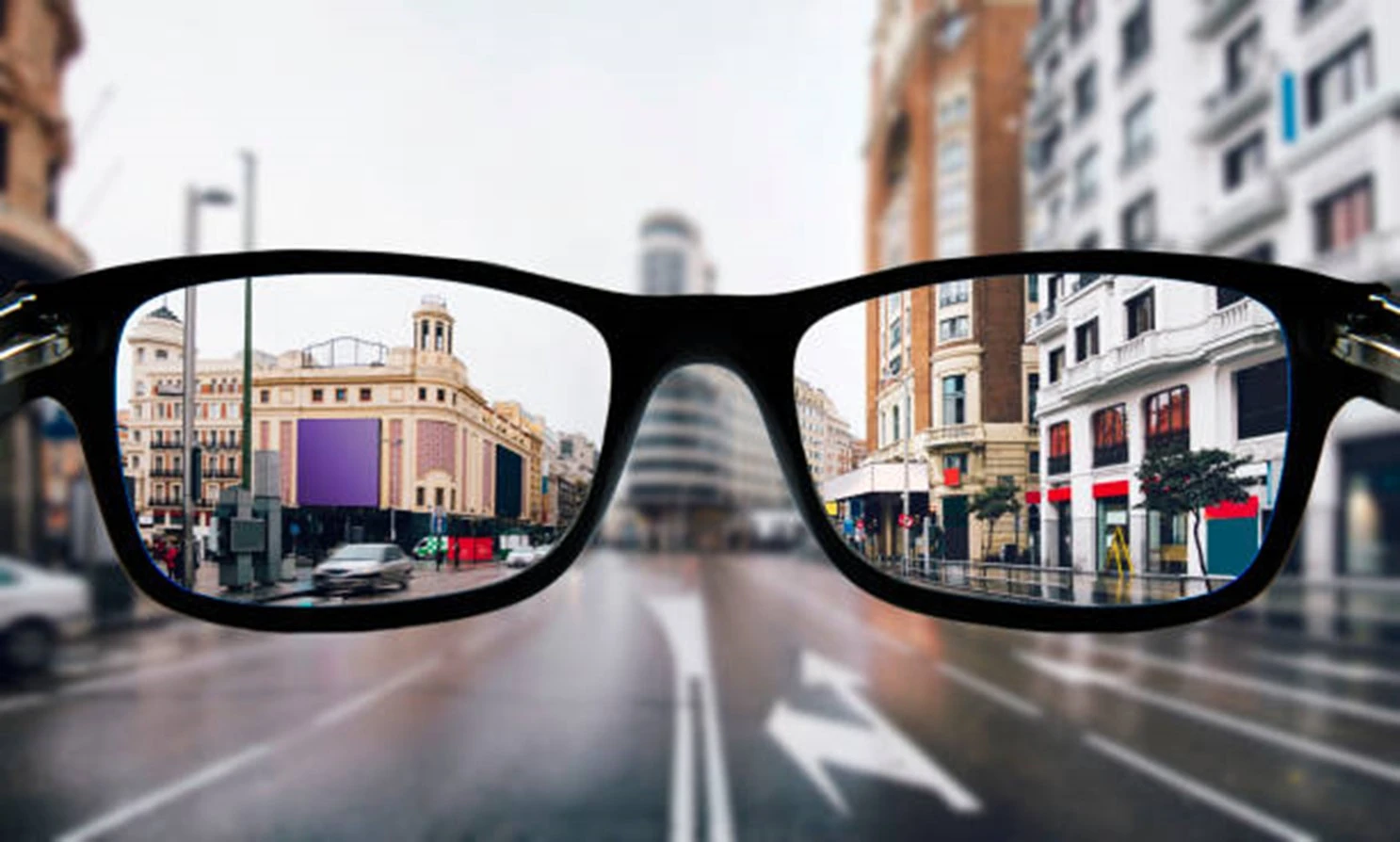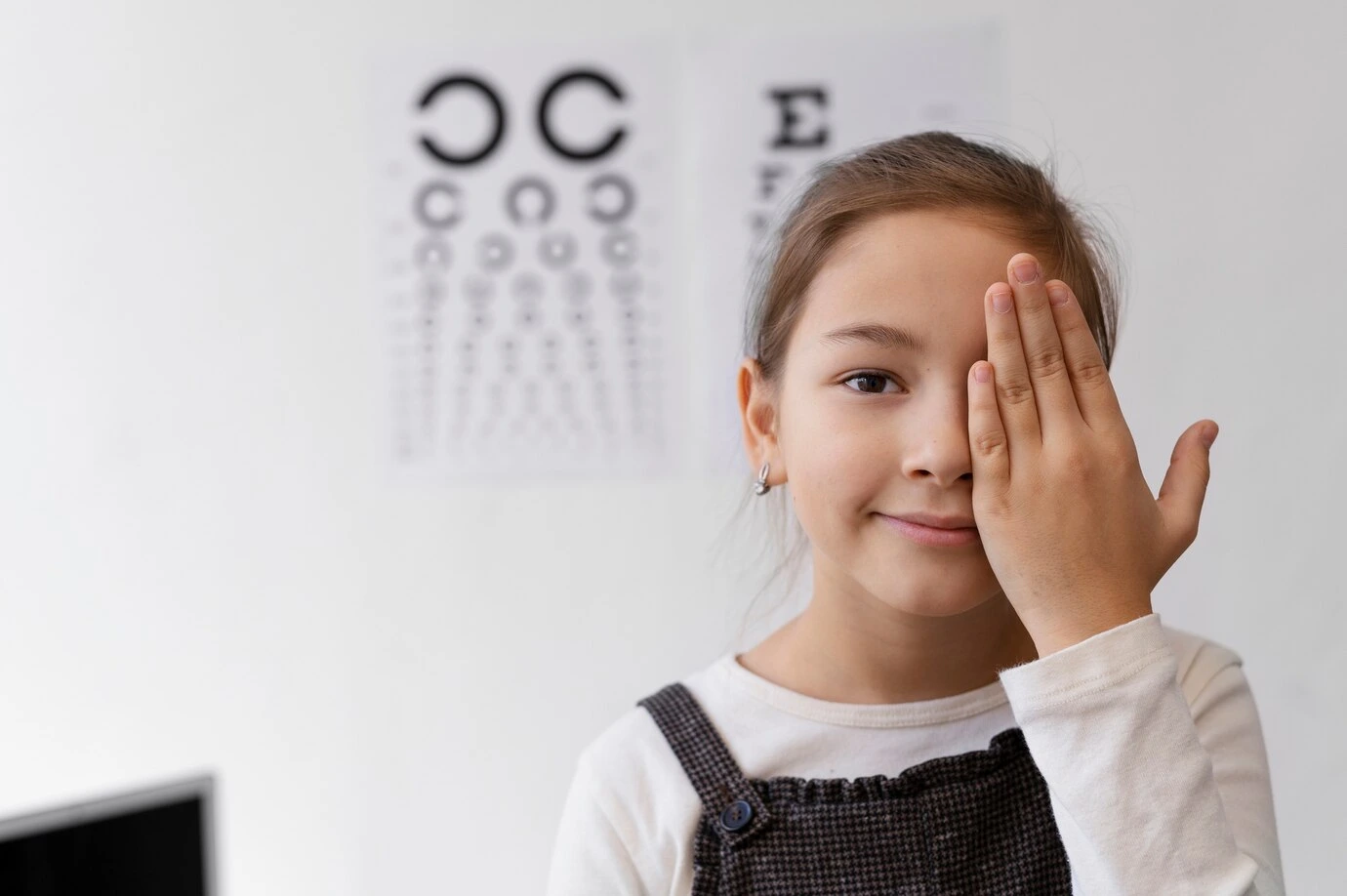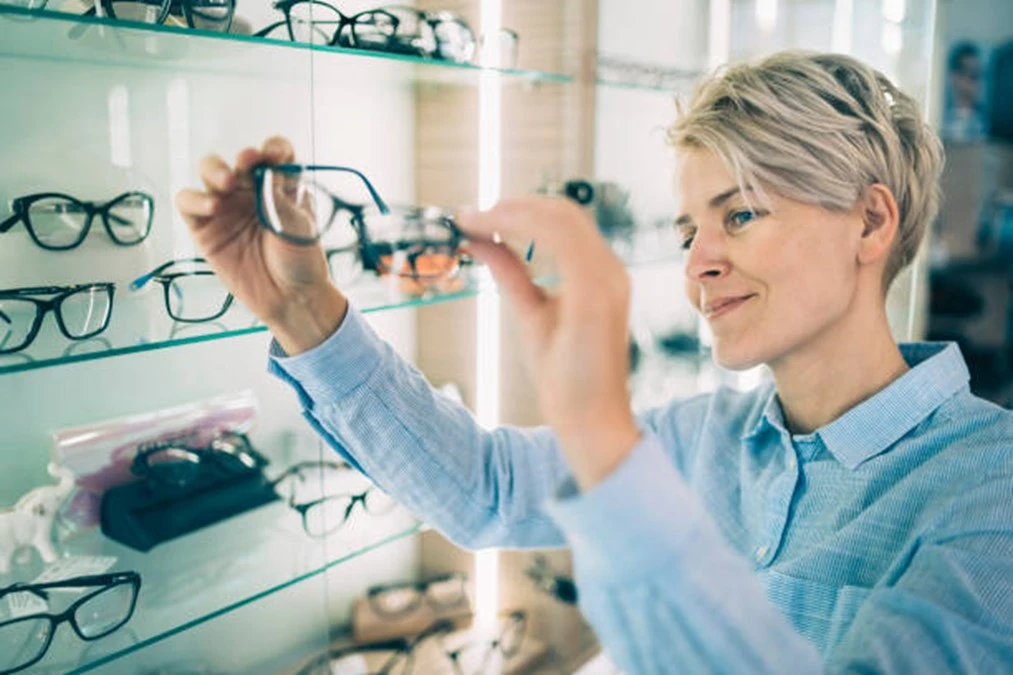In a world where screen time has rapidly grown, the prevalence of nearsightedness has significantly arisen.
Myopia, nearsightedness is one of the most common eyesight problems. Individuals with such conditions are unable to focus their eyesight on far-away objects, making distant objects blurry, while close objects appear sharp.
As per the study, it is estimated that nearsightedness affects 40% of all people in the United States.

What are some common symptoms of Myopia?
Nearsightedness may develop gradually or quickly. It usually starts between ages 6 and 14 and gets worse until your early twenties.
- Blurry distance vision
- Eye Strain
- Squinting
- Headache
- Difficulty seeing at night
Causes and Risk Factors of Nearsightedness
Nearsightedness, or myopia, is a common vision problem that affects millions of people worldwide. It occurs when the eye's shape causes light to focus in front of the retina instead of directly on it, resulting in blurry distance vision. While sharp vision up close is unaffected, seeing objects far away becomes challenging.
What Causes Nearsightedness?
The exact cause of nearsightedness is not fully understood, but a combination of genetic and environmental factors is believed to play a role.
Genetics: A family history of nearsightedness is a significant risk factor. If your parents or siblings are nearsighted, you are more likely to develop it as well.
Environmental Factors:
Excessive Near Work: Spending prolonged periods doing close-up tasks like reading, and using computers, or smartphones can contribute to the development of nearsightedness.
Limited Outdoor Time: Studies suggest that spending time outdoors, especially during childhood, can help prevent myopia. Exposure to natural light may play a protective role.
Age: Some medical conditions, such as diabetes, can cause nearsightedness.
Certain Health Conditions: Some medical conditions, such as diabetes, can cause nearsightedness.

Risk Factors for Nearsightedness
In addition to the causes mentioned above, certain factors increase the risk of developing nearsightedness:
High Levels of Education: People with higher levels of education tend to have a higher prevalence of nearsightedness, due to an increase in near-work activities.
Ethnicity: Some ethnic groups, such as East Asians, have a higher incidence of nearsightedness.
Occupation: Jobs that require prolonged close-up work, such as computer programmers or dentists, may increase the risk.

Protecting Your Vision
While there is no definitive way to prevent nearsightedness, taking steps to reduce eye strain and protect your vision is essential.
Regular Eye Exams: Schedule regular eye examination at Elite Eye Care to monitor your vision and detect any changes early on.
Balanced Screen Time: Limit screen time and take breaks to rest your eyes.
Outdoor Activities: Spend time outdoors to enjoy natural light.
Healthy Lifestyle: Maintain a healthy lifestyle with proper nutrition, exercise, and adequate sleep.
If you are experiencing blurry vision or have concerns about your eyesight, you can consult an eye care professional for a comprehensive eye exam and appropriate treatment.
How to treat Myopia
While there is no cure, several effective treatments can correct or manage it.
Treatment Options
Glasses or Contact Lenses: These are the most common and convenient ways to correct myopia. They help focus light accurately on your retina, improving your vision.
Refractive Surgery: For adults, laser-based surgeries like LASIK, PRK, and LASEK can permanently correct myopia in many cases. However, these procedures have risks and might not be suitable for everyone.
Orthokeratology (Ortho-K) Contact Lenses: These special contact lenses are worn overnight to temporarily reshape the cornea, reducing the need for glasses or regular contact during the day.
Slowing the Progression of Myopia (Especially in Children)
While these methods do not cure myopia, they can help slow its progression in children:
Spend Time Outdoors: Studies suggest that spending time outdoors can slow the development of myopia.
Regular Eye Exams: Early detection is crucial for managing myopia effectively.
Atropine Eye Drops: In some cases, low-dose atropine eye drops might be prescribed to slow myopia progression.
Specialized Contact Lenses: Certain contact lenses designed for myopia control can help slow its progression.

Important Considerations
Consult an Eye Doctor: Always consult an eye care professional for a proper diagnosis and treatment plan.
Regular Eye Exams: Regular eye exams are essential for monitoring your vision and detecting any changes.
Lifestyle Factors: Maintaining a healthy lifestyle, including a balanced diet, regular exercise, and sufficient sleep, can contribute to overall eye health.
It is important to note that there is no guaranteed way to prevent or cure myopia completely. However, with proper care and management, you can effectively manage your vision and enjoy an excellent quality of life.
